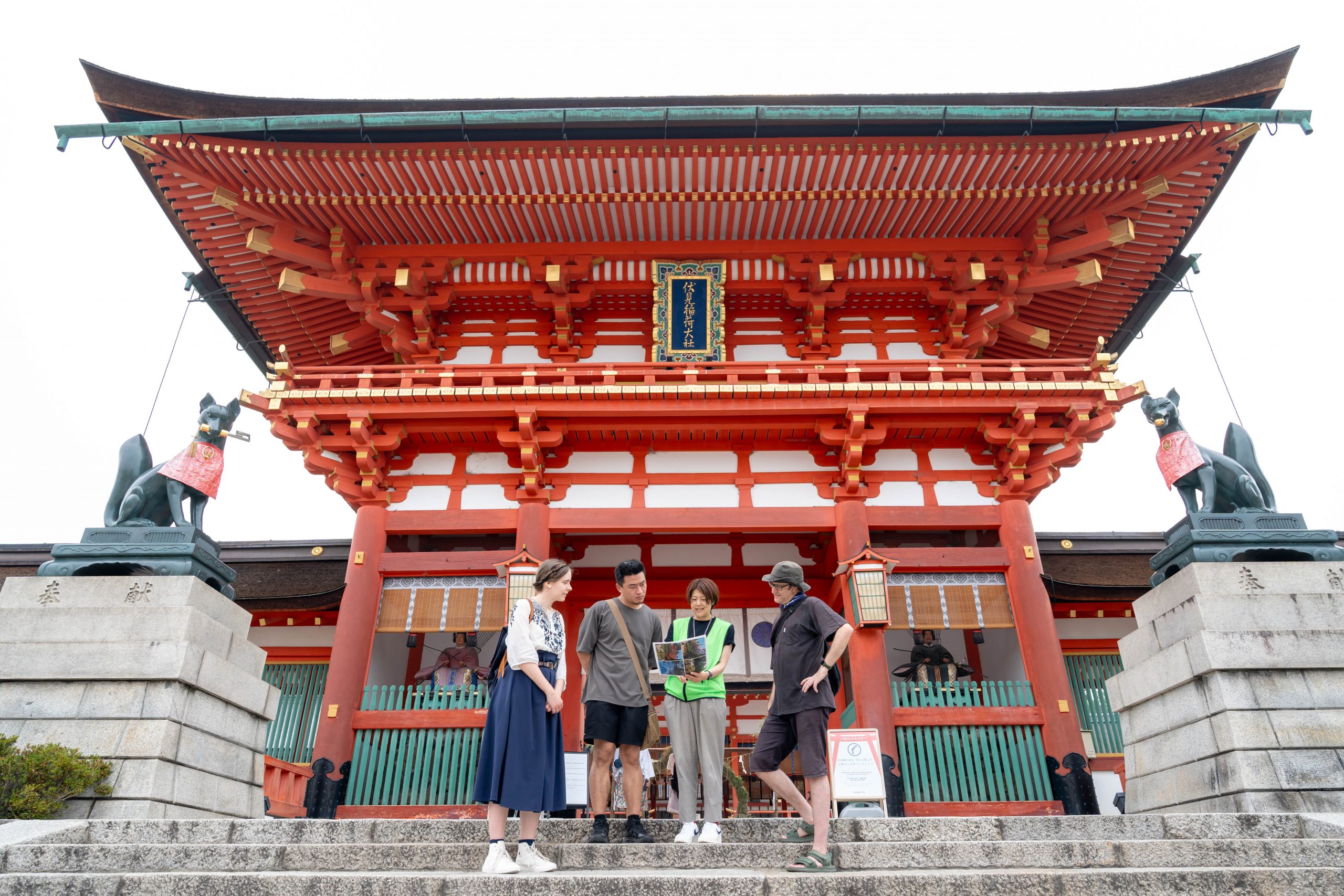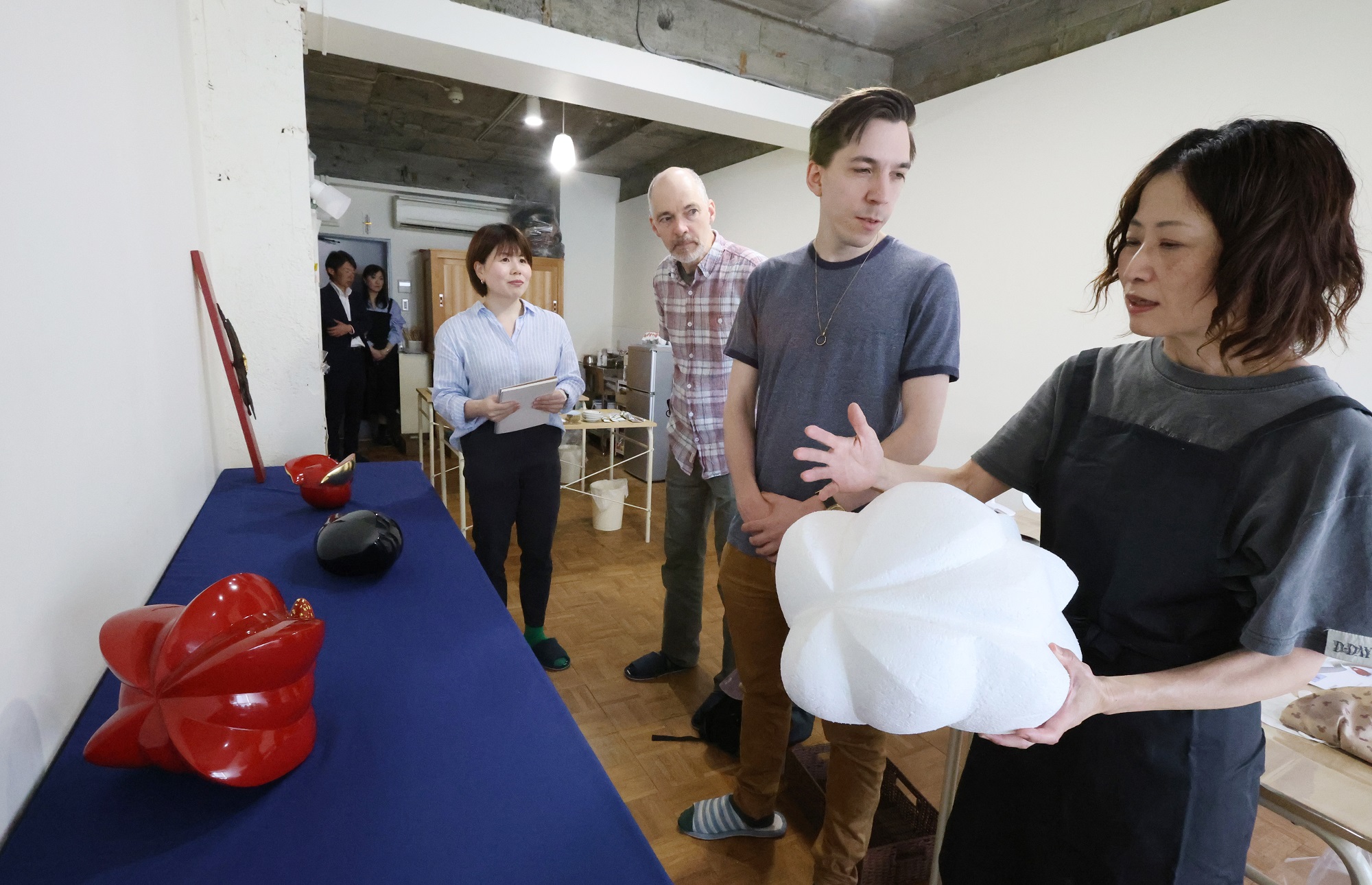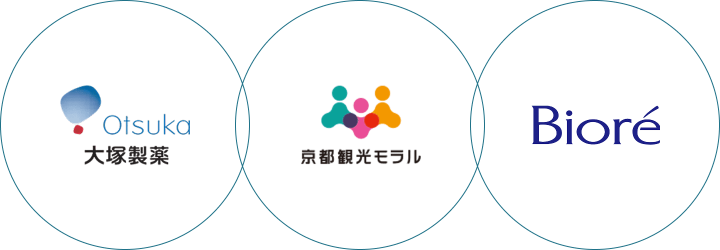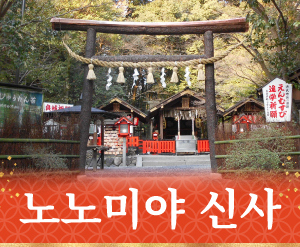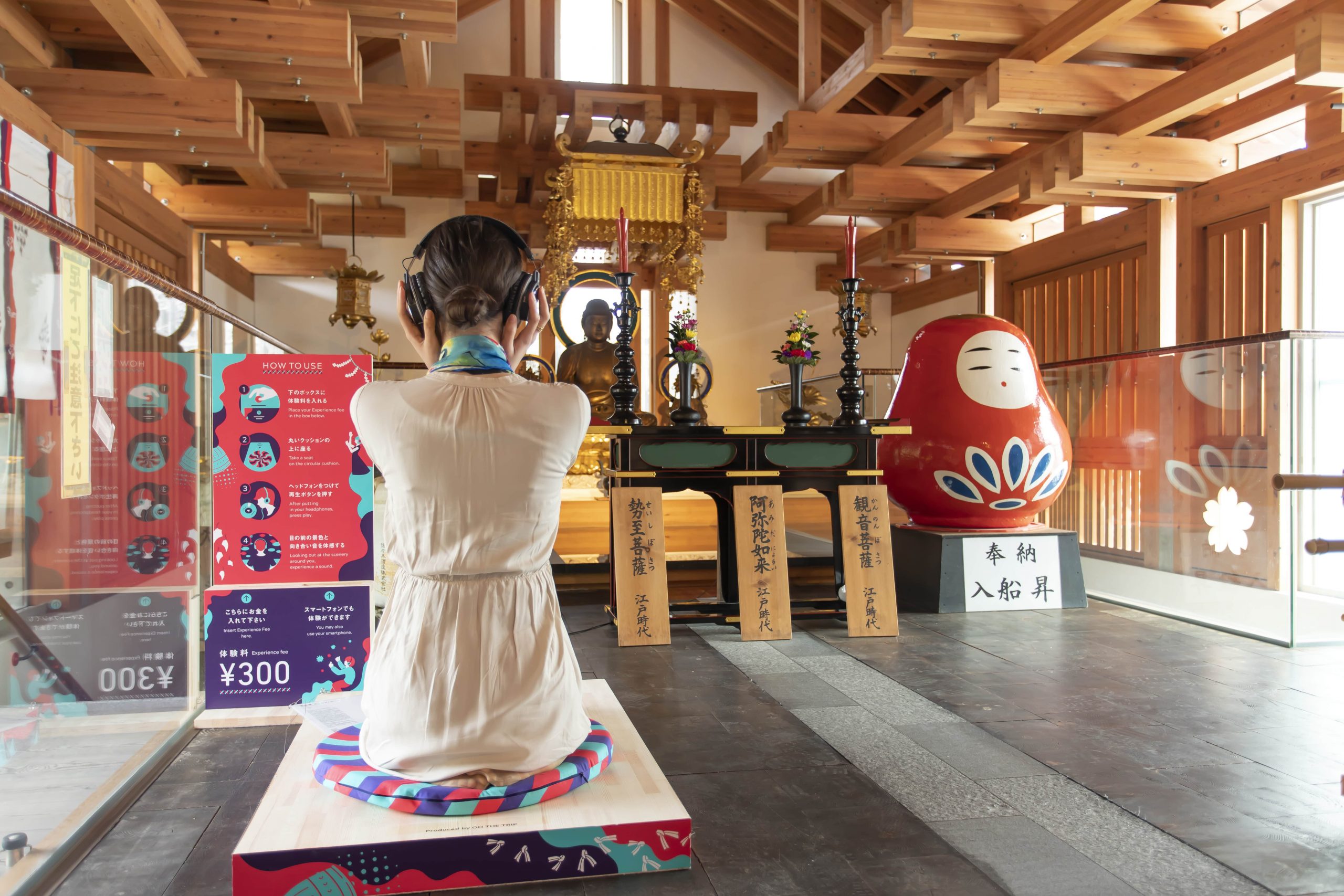
당신의 영혼을 순례하는 3막짜리 사운드트랙
천년의 수도 교토는 수많은 신이 다스리는 고대 도시로, 수많은 부처가 가르침을 물려주었습니다. 우아한 귀족 그림 두루마리의 무한한 실로 엮인 풍부한 이야기, 사무라이의 부흥과 몰락, 마을 사람들의 겸손한 기도가 있습니다.
이러한 이야기들은 교토의 사찰과 신사를 무대로 펼쳐졌으며, 이제 SOUND TRIP이 가장 유명한 산젠인, 미부데라, 그리고 기후네 신사에서 펼쳐집니다. 이 세 곳을 방문하면 특별히 마련된 부스에 앉아 헤드폰을 끼고 주변 세상을 차단하세요. 온몸을 휩쓸고 지나가는 소리에 귀를 기울이세요. 어지러움이 느껴지고 감각이 조금씩 흐릿해집니다. 현실은 천천히 당신 안에 저장된 이미지와 기억과 합쳐지고, 마음의 눈으로 음악을 듣기 시작합니다. 이것이 일종의 깨달음일까요? 헤드폰을 통해 들리는, 마음속 깊은 곳에서 아주 조용히 울리는 그 소리가 당신 자신의 목소리일까요? SOUND TRIP은 이야기가 담긴 음악을 만드는 것입니다. 당신은 영혼으로의 순례를 떠나고 있으며, 이것이 바로 사운드트랙입니다.
SOUND TRIP 사용 방법
- 참여하는 사찰이나 신사에서 특별한 목적의 SOUND TRIP 부스에 앉아보세요.
- 지정된 상자에 기부금(300엔)을 넣어주세요.
- 헤드폰을 끼고 재생 버튼을 누르세요
- 당신 앞에 펼쳐지는 소리와 풍경을 따라가는 여행
【2막】미부데라 절
조용한 노래와 돌아가신 분들의 삶 - 애국지사와 천불이 안치된 성지, 애도의 성지

기도와 신앙의 무대 위의 조용한 말씀
미부데라 절은 삶을 성찰하는 곳이라는 느낌을 줍니다. 승려 카이켄이 어머니를 기리기 위해 이곳을 건립하고 지장보살(자녀의 수호신)을 주요 신앙 대상으로 삼았기 때문입니다. 이 절에는 무로마치 시대(1336-1573)의 불상 천불을 모신 탑도 있는데, 그중에는 아미타불과 지장보살도 있습니다. 이후 미부데라 절은 소위 부흥의 아버지 엔가쿠 선인이 창시한 무언극인 미부 교겐의 본고장으로 알려지게 되었는데, 이 연극은 불교의 가르침을 일반인이 이해하기 쉽게 전달합니다. 이 연극들은 대중에게 지장보살(불교 석상) 신앙을 전파하는 데 중요한 역할을 했으며, 시작된 지 약 700년이 지난 오늘날에도 여전히 공연되고 있습니다.
미부데라 사찰은 19세기 정예 경찰 조직인 신센구미와도 깊은 연관이 있습니다. 이러한 연관성 때문에 이 조직은 미부로시(미부의 주인 없는 무사)라는 이름으로도 알려져 있으며, 사찰 경내 미부 묘지에는 지도자 콘도 이사미를 비롯한 구성원들의 무덤이 있습니다. 네, 미부데라 사찰은 저승의 목소리를 듣는 곳입니다.
미부데라 사원 정보
미부데라 사원은 991년에 창건되었습니다. 본존인 엔메이지조보살은 시라카와 천황에 의해 봉헌되었습니다. 이 사원에서는 매년 세츠분 야쿠요케 (악령을 물리치는) 의식은 매년 2월에 거행됩니다. 미부교겐봄과 가을에 열리는 축제로 국가 중요 무형 민속 문화재로 지정되어 있습니다.
주소: 교토시 나카교구 미부나기노미야초 31
영업시간 : 매일 오전 8시 30분 ~ 오후 4시 30분
입장료: 경내 입장은 무료입니다. 미부 묘지 입장료는 100엔, 전시실 입장료는 200엔입니다.
문의: 075-841-3381
Kyoka의 링크
-미부데라에서만 들을 수 있는 음악
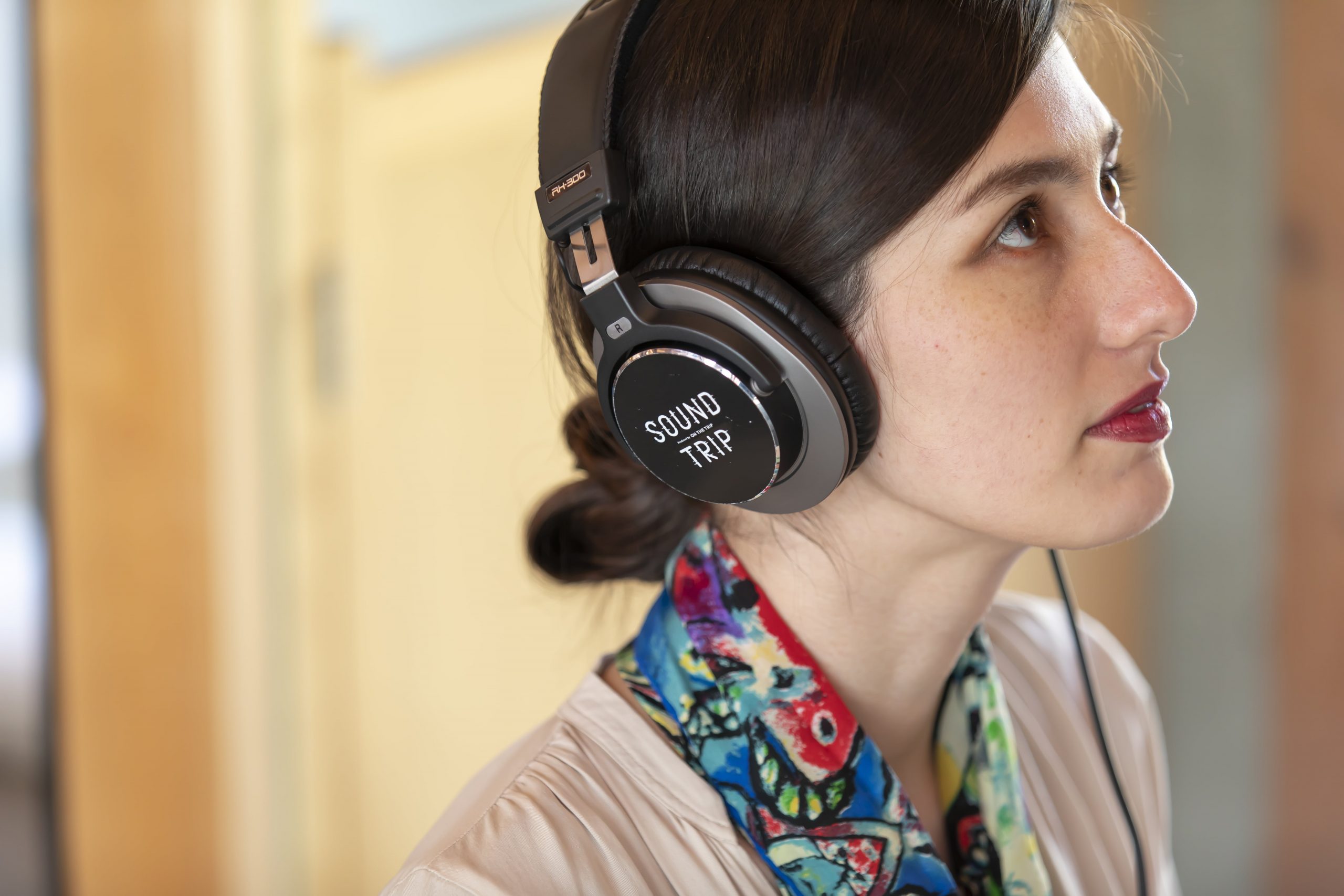
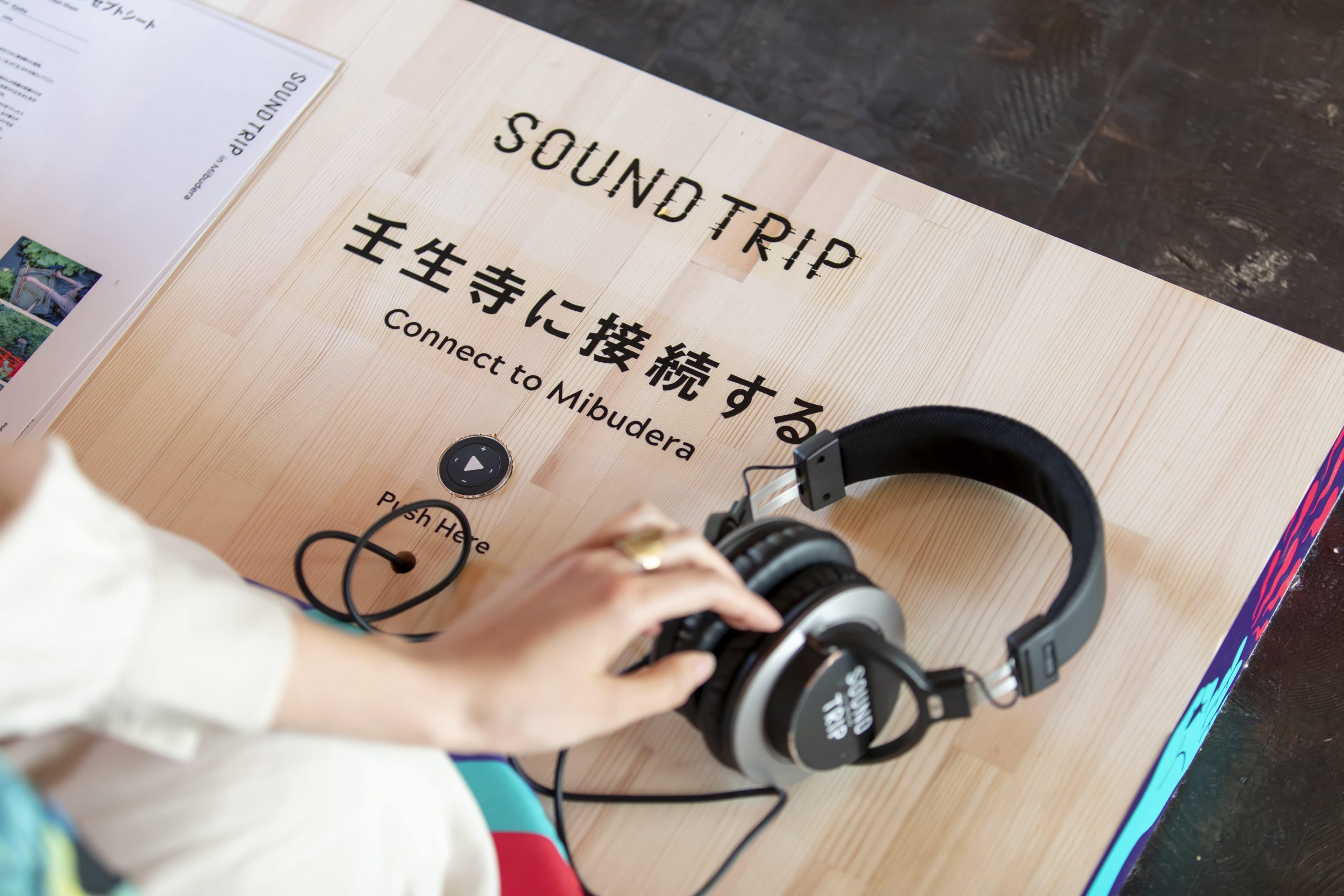
미부라는 이름은 원래 "물"과 "태어났다"는 뜻의 한자를 조합하여 만들어졌습니다. 이 지역은 예전에는 농업에 사용되었던 습지였으며, 미부나(mibuna)와 같은 교토식 채소의 생산지로 유명했습니다.
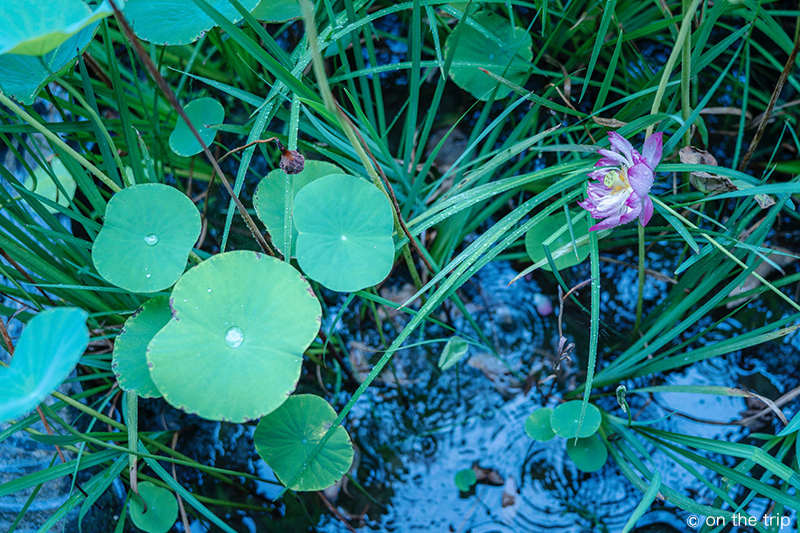
미부라는 이름의 유래에서 영감을 받은 교카는 사찰 주변의 물을 작품에 녹여냈습니다. 지장보살들이 안치된 미부 묘소 연못의 소리, 지장보살상에 쏟아지는 물소리, 샘솟는 샘물, 그리고 하늘에서 땅으로 떨어지는 빗소리가 미부 교겐을 연주하는 오케스트라의 음색과 어우러집니다. 이 작품은 어둠 속 물방울에서 부드럽게 퍼져 나가는 잔물결의 이미지를 떠올리게 합니다.
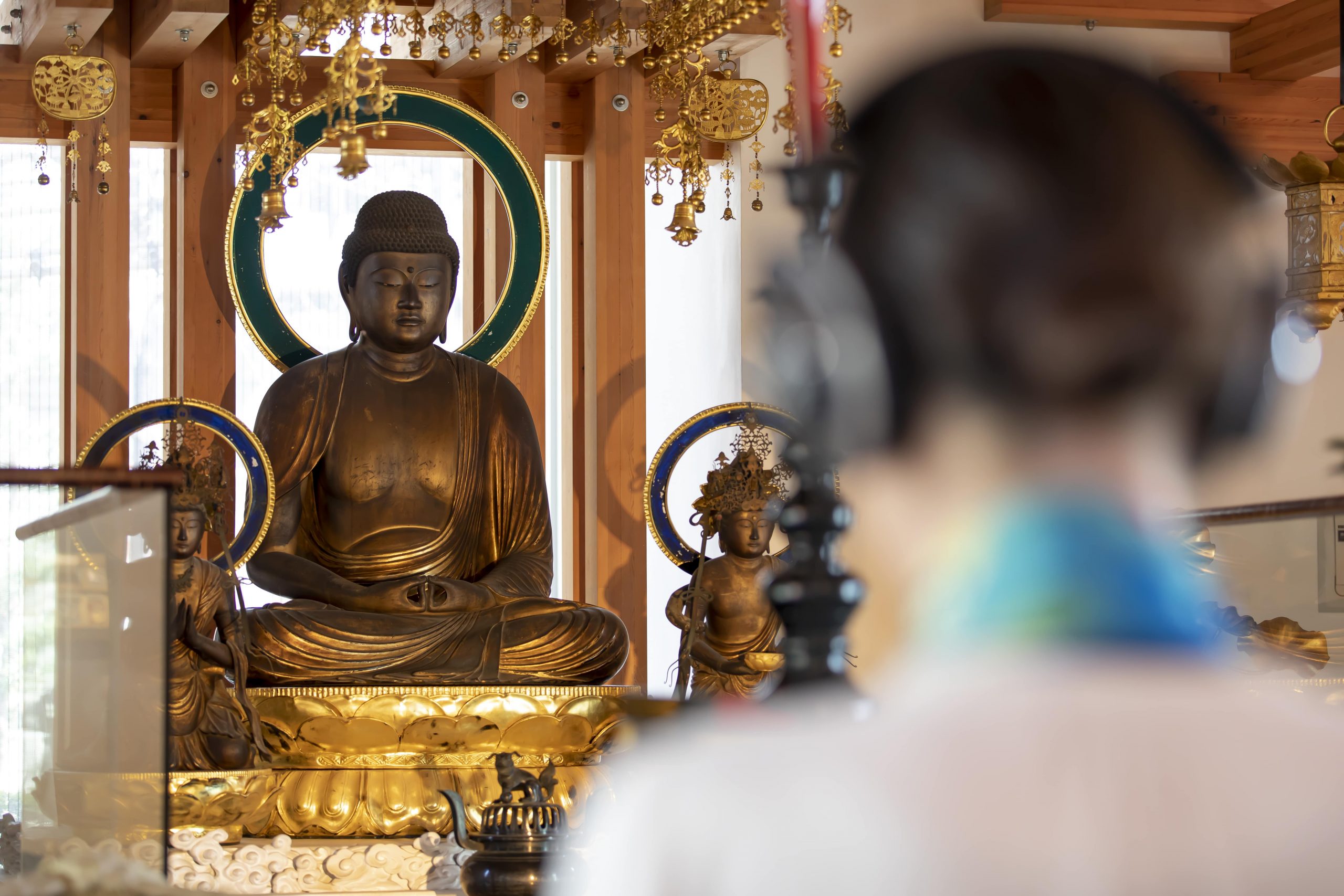
물은 모든 생명체에게 생명을 주는 존재이며, 아이를 낳은 어머니에게도 생명을 주는 신성한 양육자입니다. 아미타불 삼존상 앞 부스에 앉아 헤드폰을 착용해 보세요. 음악이 시작되면 마치 생명을 주는 물로 가득 찬 듯 영혼을 적시는 편안함에 흠뻑 빠져보세요. 당신이 듣는 소리는 어쩌면 생명 그 자체가 연주하는 소리일지도 모릅니다.
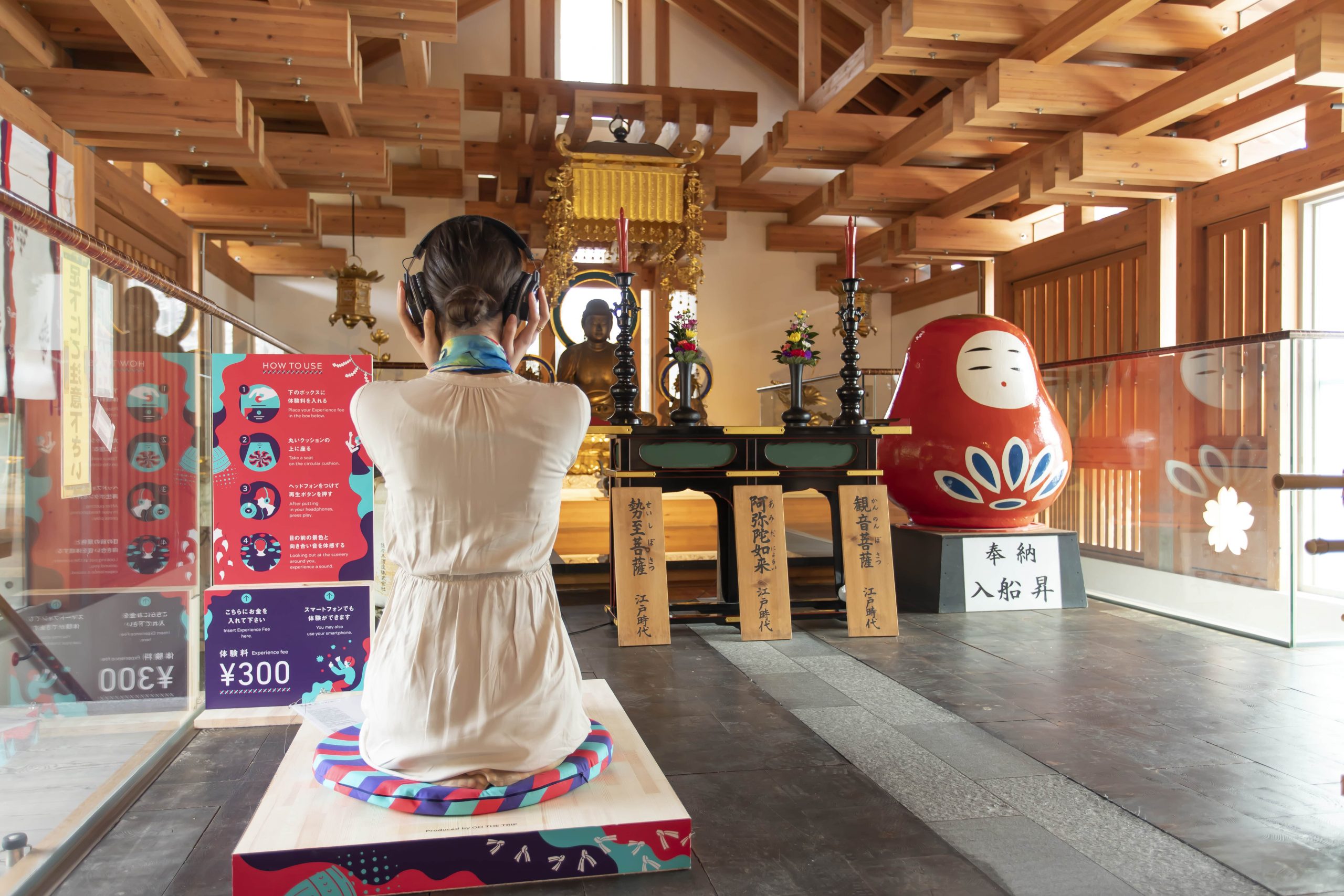
아티스트: Kyoka
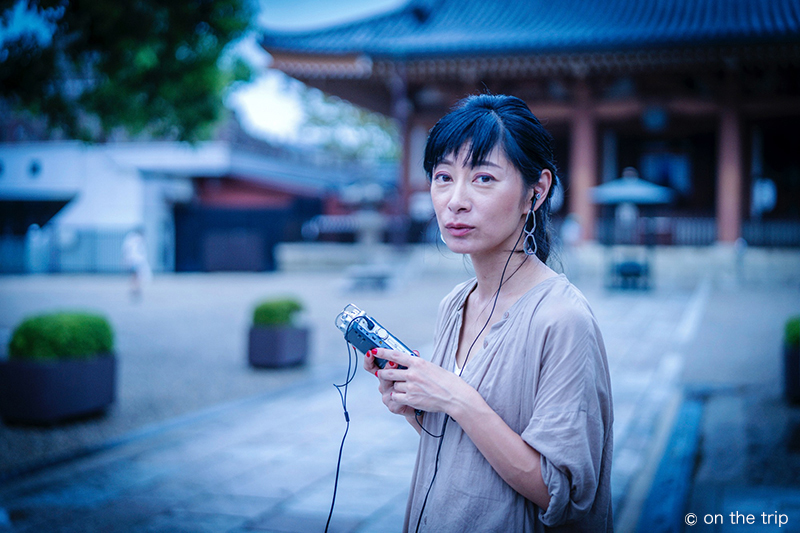
베를린을 기반으로 활동하는 쿄카는 현대 실험적 일렉트로닉 음악의 거장인 라스터-노톤(Raster-Noton)과 함께 작업하는 최초의 여성 솔로 아티스트입니다. 매혹적인 라이브 공연으로 유명한 그녀는 설치 미술 작품을 제작하고 애플의 전 세계 광고 캠페인을 진행했습니다. 슈어(Shure)와 믹스클라우드(Mixcloud)가 선정한 현대 오디오 문화의 한계를 뛰어넘는 24명의 글로벌 크리에이터 명단에 이름을 올렸으며, 인기 투표를 통해 최고의 아티스트 중 한 명으로 선정되었습니다.
사운드 트립【1막】산젠인사운드 트립【3막】기후네 신사



